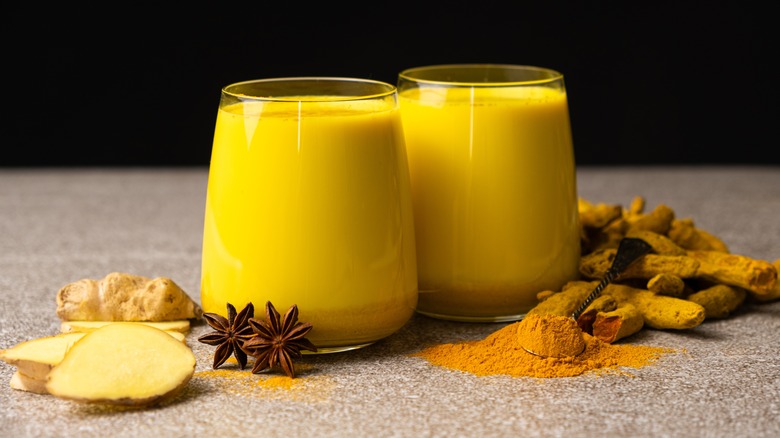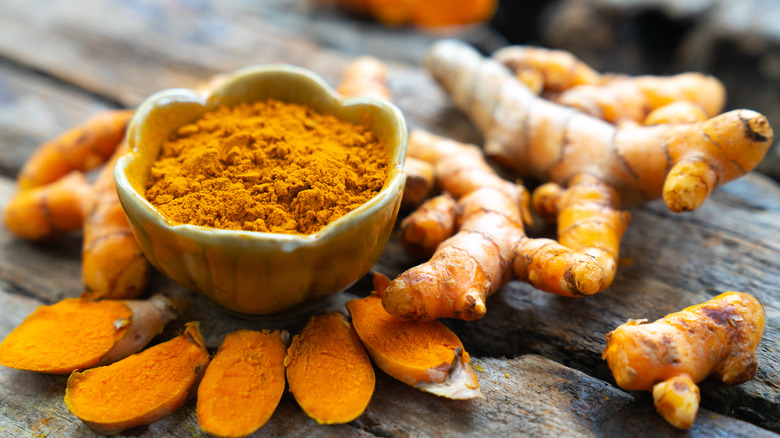Does A Golden Latte Have Coffee In It?
A golden latte — traditionally known as "haldi ka doodh," which translates to "turmeric milk" in Hindi — has deep roots in Ayurvedic medicine, where it has been used for centuries as a therapeutic drink. This ancient beverage began as a humble home remedy, with families passing down recipes through generations. The classic recipe is caffeine-free and features a warming blend of milk and turmeric, infused with aromatic spices like cinnamon, ginger, cardamom, saffron, and nutmeg. They may be uncommon spices for cooking in some kitchens, but these aromatics celebrate Indian culinary traditions and Ayurvedic practices. To make this beverage enjoyable to plant-based folks and those with dairy sensitivities, simply replace the milk with your favorite plant-based version.
To get the healing benefits of turmeric, it's also important to add black pepper to the mixture. Piperine (the active ingredient in black pepper) prevents the liver from getting rid of curcumin (the active ingredient in turmeric) thereby making it available for the body to absorb. In the realm of trendy coffee shops in the West, many cafes create their own interpretations on centuries of tradition, which may include a shot of espresso to make "dirty golden lattes." On occasion, this practice has received criticism for diluting the cultural heritage of the drink.
The healing benefits of turmeric
It appears that modern science has caught up with ancient wisdom as a growing body of scientific studies shed light on the significant health benefits of turmeric, in both fresh and powdered forms. Fresh turmeric is more potent in flavor and contains higher levels of curcumin, a compound shown to have anti-inflammatory properties and positive effects on brain and heart health. This vital compound may be lost during the processing of powdered turmeric, but it still retains significant health-promoting characteristics.
On the other hand, powdered turmeric has a milder flavor and slightly less curcumin content. But it's still beneficial to your health while also being more convenient to use. It also has a longer shelf life and is more readily available in most grocery stores. Powdered turmeric can be an easy swap for recipes that call for fresh turmeric, and while there are spices that can substitute for turmeric to render the characteristic color for a visually pleasing dish, they fall short of serving as a one-for-one replacement. So, whether you're seeking to boost the nutrition of your meal, infuse a bold, earthy flavor, or add a vibrant hue to your recipe, don't hesitate to use turmeric in the kitchen — fresh or powdered.

